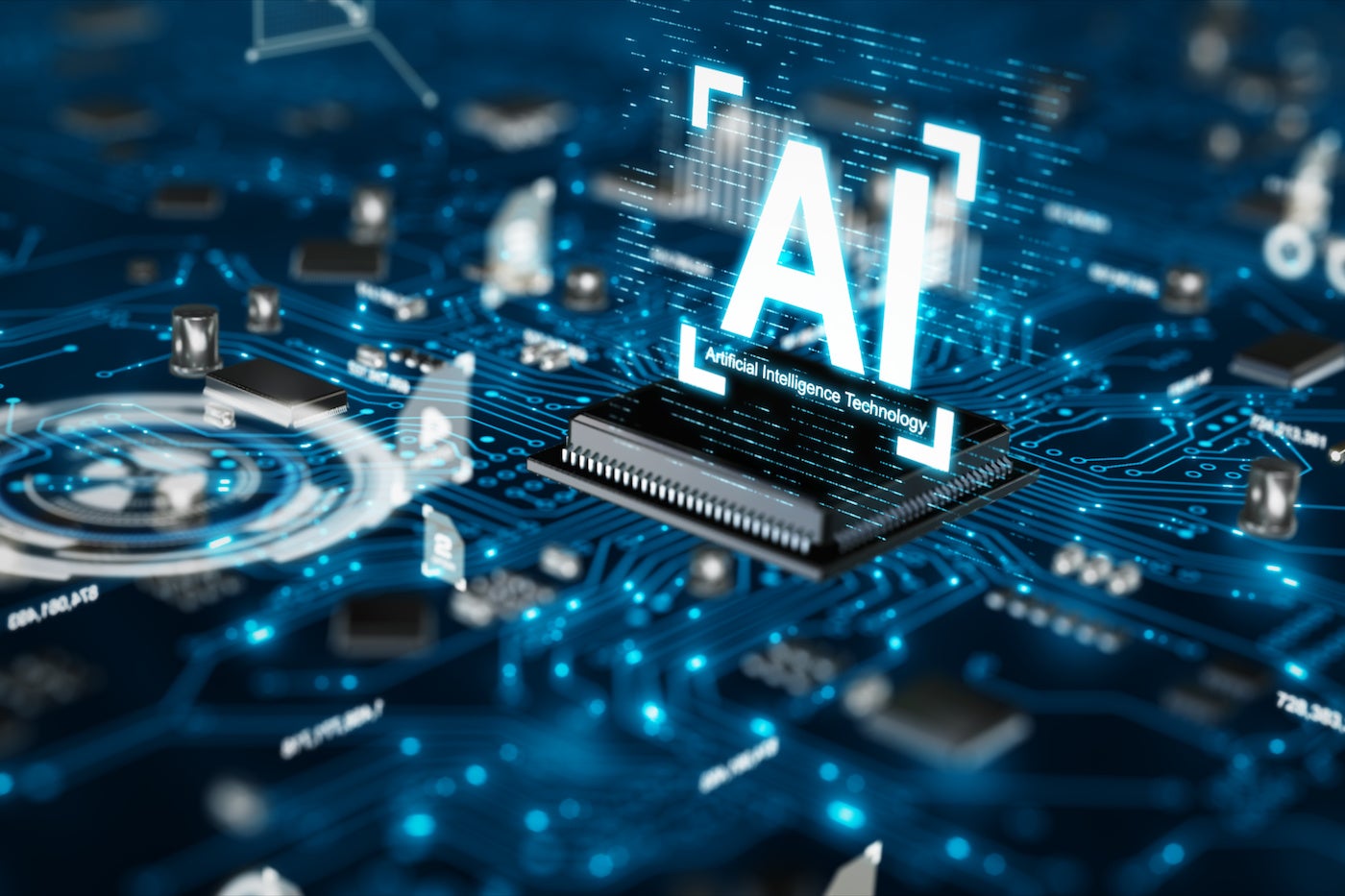
Iris Technology has released a new no-code solution that allows developers and enterprises to train and deploy AI models faster — with far less data and computing power. The platform, webAI, fast-tracks AI and computer vision processes while enabling companies to retain control over intellectual property.
SEE: Hiring kit: Computer vision engineer (TechRepublic Premium)
Starting the first week of January, webAI is available through a limited beta release. The company assures that its new technology will disrupt conventional approaches to AI.
TechRepublic spoke to James Meeks and David Stout, the two co-CEOs of Iris Technology, to get the inside story on the company’s new platform, the potential of no-code AI and its challenges.
Jump to:
- webAI: What it can do
- Key features of the webAI beta release
- The no-code AI market and its importance
- Addressing the challenges of no-code AI
- The future of no-code AI in the workplace
webAI: What it can do
Iris Technology has spent the past three years in stealth mode developing webAI. With the webAI platform release, developers and enterprises can build models and prototypes quickly and at no cost before investing in an enterprise license. Time-to-deploy is dramatically reduced with the new solution.
SEE: How low-code and no-code solutions can help good developers become even better (TechRepublic)
“The biggest benefits will come in making AI far more accessible and cost-effective,” Meeks said. “There are only about 300,000 AI experts in the world today, so creating a team of people who can build AI models is a major challenge. But there are about 55 million software developers, and no-code AI means any team of developers can build, train and deploy models with state-of-the-art performance without deep AI backgrounds.”
The company says that webAI requires one-fifth of the data to train and one-third of the training time compared to YoloV7, which is currently considered the fastest and most accurate real-time object detection model for computer vision tasks.
Additionally, webAI enables iterative development, putting models in the field faster with far less risk, because training is always free. Only around 10% of traditional computer vision AI models are ever deployed, and iteration requires rebuilding the entire model.
“Most AI platforms today are built around the assumption that Big Data is the answer to the world’s problems,” Stout said. “webAI throws that assumption out the window. Our fundamentally different approach envisions a world where practically any developer, regardless of their budget or past experience with AI, can train, deploy, and iterate an AI model quickly and cost-effectively.”
Key features of the webAI beta release
Key features of the webAI beta release include:
- Agility and speed: Quick curation and deployment with less model training.
- Sensor-agnostic capacities: Trained Iris models can work across camera types and computers.
- Edge-capable: The platform has low computational requirements, as webAI models can run on most consumer-grade laptops and don’t require cloud computing.
- Data privacy and IP protection: Delivery via blockchain allows customers to build models in their own environment, adding to security and privacy, and customer data and intellectual property belong to the customer rather than Iris Technology.
- No-code and full-code modes: The platform offers no-code and full-code modes to increase accessibility while giving experienced developers full control.
webAI believes no-code opens the doors for AI to solve real-world problems and generate disruptive value in areas where traditional AI has been cost-prohibitive and ineffective.
SEE: Top edge computing platforms (TechRepublic)
“Enterprises are investing billions of dollars in artificial intelligence expertise, computing infrastructure and data acquisition-curation to fuel traditional AI experiments that have about a 13% chance of ever being deployed,” Meeks explained.
Developers and enterprises can develop AI apps “without having to spend hundreds of thousands of dollars on computing infrastructure, data collection and curation,” Meeks added.
The no-code AI market and its importance
webAI tackles AI computer vision challenges and the processes required to develop new AI applications. From managing data quality to selecting app features and training, deploying and maintaining the solution, developing new AI apps is time-consuming. Many processes are still artisanal and completed manually by data teams.
SEE: Top data quality tools (TechRepublic)
But new AI automation tools for developers, such as advanced feature engineering, have become increasingly available to help data experts streamline production. In this environment, no-code AI is considered the ultimate automation approach to AI development.
Future Market Insights estimates that the global no-code AI platform market will reach $38.5 billion in 2032, with a growth of 28.1% CAGR. The market was valued at just $2.58 billion in 2021.
Driven by the urgent need to automate, the adoption of ML and AI across industries and sectors, the time and cost-consuming factors of building AI from scratch, and the lack of skilled AI-literate workers, no-code AI is only expected to continue growing.
SEE: Hiring kit: Autonomous systems engineer (TechRepublic Premium)
Popular no-code applications include Knack, Bubble, Lansa, RunwayML and Substack. Big tech companies like Google and Microsoft have also been developing no-code AI to enrich their cloud services and attract new customers.
However, despite the potential of the new technology, no-code AI also presents many challenges.
Addressing the challenges of no-code AI
No-code AI shares several commonalities with traditional AI when it comes to performance. For example, model drifting — when an AI application produces inefficient or inaccurate results due to changes in environmental data — can affect both types of technologies. However, the no-code AI industry also has to overcome other negative perceptions associated with their offerings, such as black box AI.
Black box AI
Black box AI, which is when AI applications produce advanced results but the inner mechanics of how the algorithm achieved the outcomes are unclear, is often linked to no-code AI. Black box models are criticized for their lack of transparency and their inability to verify results.
With this concern in mind, TechRepublic asked Iris Technology how webAI addresses black box AI challenges and provides transparency:
“Users with more expertise can … work in a full-code environment where they can build their elements and workflows from scratch,” Stout explained. “webAI’s novel architecture, Deep Detection, is not open source, but the platform is incredibly accessible and transparent. Not only can any developer train, deploy and iterate an AI model quickly and cost-effectively, they also own and control those models and all inputs and outputs.”
Synthetic data
Synthetic data is another trend in no-code AI and ML that is gaining strength. It is increasingly being used for algorithms that require biometrics, video and photographic data.
Data for AI projects is difficult to attain because it must be acquired consensually from creators or owners, and it must be diverse to avoid biased and discriminatory results. Synthetic data, on the other hand, requires no consent and can be generated in large quantities to train AI apps.
SEE: The Machine Learning & Artificial Intelligence Certification Bundle (TechRepublic Academy)
But developers question the ability of synthetic data to match the quality of real-world information. They also wonder about its ability to create diverse databases and features.
“webAI does not utilize synthetic data today, though we believe there are use cases in which a synthetic is a great option,” Stout said. “Within webAI, we have AI model training essentials; if you are using one of our proprietary architectures, there will be some augmentation benefits happening in parallel to bolster your dataset.”
Data preparation and model drifting
Preparing data for ML and AI is another hot topic, as data needs to meet the highest standards for an algorithm to perform effectively. Inconsistent, outdated or omitted data can cause a model to collapse and drift.
Stout assured that regarding data quality standards, webAI is extremely transparent.
“When we describe high-quality data with webAI, we often refer to well-defined clean data,” Stout said. “In most applications, the sensor is not the gate, and it typically lacks information and incorrect labels cause the model deployment to not reach its potential, but we can take most raw camera feeds without pre-cleansing.”
SEE: Data cleansing: A cheat sheet (TechRepublic)
Monitoring AI applications is vital to enterprises, especially in modern enterprises where unexpected events, market and supply chain disruptions, and environmental issues can create major shifts in data.
According to Stout, Iris Technology built webAI as an AI tool that provides creators with explainability.
“When a model is deployed into a workflow, it can be monitored by the user within the IDE itself,” Stout explained. “For example, a deployed product using webAI can be reviewed in real-time by the developer or team who is utilizing the model.”
To monitor applications, the interface provides real feedback and metrics to ensure the models’ optimal performance over their life cycles.
The future of no-code AI in the workplace
No-code AI will undoubtedly allow numerous companies to leverage state-of-the-art technology while cutting costs and deploying already-tested algorithms, but will no-code AI replace data teams and highly skilled workers?
SEE: Artificial Intelligence Ethics Policy (TechRepublic Premium)
In the opinion of the Iris Technology team, no-code AI is a win-win for data experts and non-experts.
“No-code AI will give more people the ability to train, deploy and iterate models, and webAI’s novel approach means data scientists and engineers can do so more quickly and cost-effectively,” Meeks said. “Far from replacing human input, we believe this will increase the demand for human expertise and creativity as they work to bring AI to new areas.”
Read next: 8 most innovative AI and machine learning companies (TechRepublic)
Check these resources from TechRepublic Academy if you want to learn more about developing on AI:
The Ultimate Python & Artificial Intelligence Certification Bundle
The Machine Learning & Artificial Intelligence Certification Bundle
Artificial Intelligence (AI) in Python: A H2O Approach







